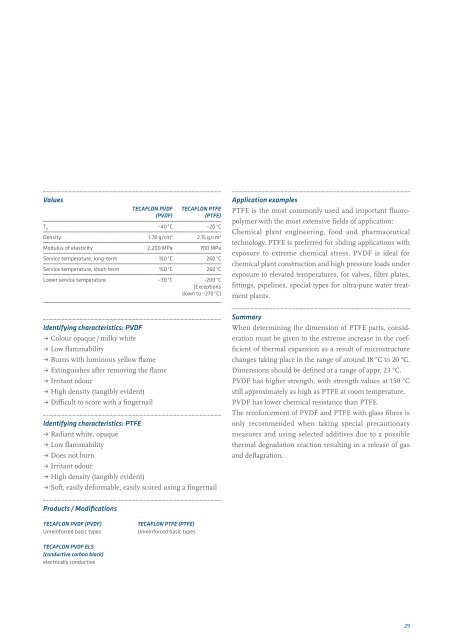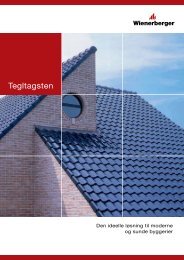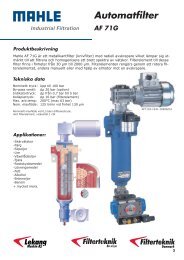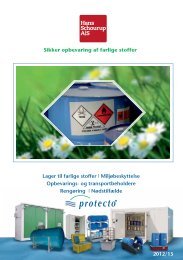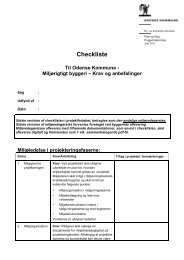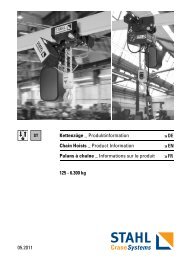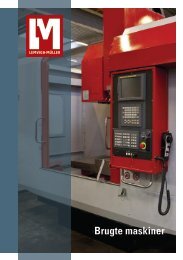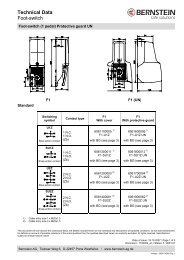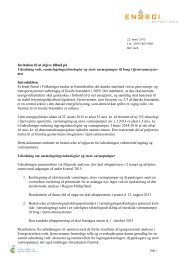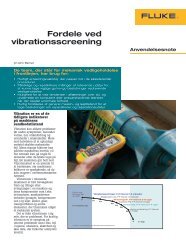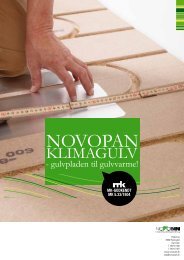Engineering plastics â The Manual - F.wood-supply.dk
Engineering plastics â The Manual - F.wood-supply.dk
Engineering plastics â The Manual - F.wood-supply.dk
Create successful ePaper yourself
Turn your PDF publications into a flip-book with our unique Google optimized e-Paper software.
Values<br />
TECAFLON PVDF<br />
(PVDF)<br />
TECAFLON PTFE<br />
(PTFE)<br />
T g –40 °C –20 °C<br />
Density 1.78 g/cm 3 2.15 g/cm 3<br />
Modulus of elasticity 2,200 MPa 700 MPa<br />
Service temperature, long-term 150 °C 260 °C<br />
Service temperature, short-term 150 °C 260 °C<br />
Lower service temperature –30 °C –200 °C<br />
(Exceptions<br />
<br />
down to –270 °C)<br />
Application examples<br />
PTFE is the most commonly used and important fluoropolymer<br />
with the most extensive fields of application:<br />
Chemical plant engineering, food and pharmaceutical<br />
technology. PTFE is preferred for sliding applications with<br />
exposure to extreme chemical stress. PVDF is ideal for<br />
chemical plant construction and high pressure loads under<br />
exposure to elevated temperatures, for valves, filter plates,<br />
fittings, pipelines, special types for ultra-pure water treatment<br />
plants.<br />
Identifying characteristics: PVDF<br />
ˌˌColour opaque / milky white<br />
ˌˌLow flammability<br />
ˌˌBurns with luminous yellow flame<br />
ˌˌExtinguishes after removing the flame<br />
ˌˌIrritant odour<br />
ˌˌHigh density (tangibly evident)<br />
ˌˌDifficult to score with a fingernail<br />
Identifying characteristics: PTFE<br />
ˌˌRadiant white, opaque<br />
ˌˌLow flammability<br />
ˌˌDoes not burn<br />
ˌˌIrritant odour<br />
ˌˌHigh density (tangibly evident)<br />
ˌˌSoft, easily deformable, easily scored using a fingernail<br />
Summary<br />
When determining the dimension of PTFE parts, consideration<br />
must be given to the extreme increase in the coefficient<br />
of thermal expansion as a result of microstructure<br />
changes taking place in the range of around 18 °C to 20 °C.<br />
Dimensions should be defined at a range of appr. 23 °C.<br />
PVDF has higher strength, with strength values at 150 °C<br />
still approximately as high as PTFE at room temperature.<br />
PVDF has lower chemical resistance than PTFE.<br />
<strong>The</strong> reinforcement of PVDF and PTFE with glass fibres is<br />
only recommended when taking special precautionary<br />
measures and using selected additives due to a possible<br />
thermal degradation reaction resulting in a release of gas<br />
and deflagration.<br />
Products / Modifications<br />
TECAFLON PVDF (PVDF)<br />
Unreinforced basic types<br />
TECAFLON PTFE (PTFE)<br />
Unreinforced basic types<br />
TECAFLON PVDF ELS<br />
(conductive carbon black)<br />
electrically conductive<br />
29


